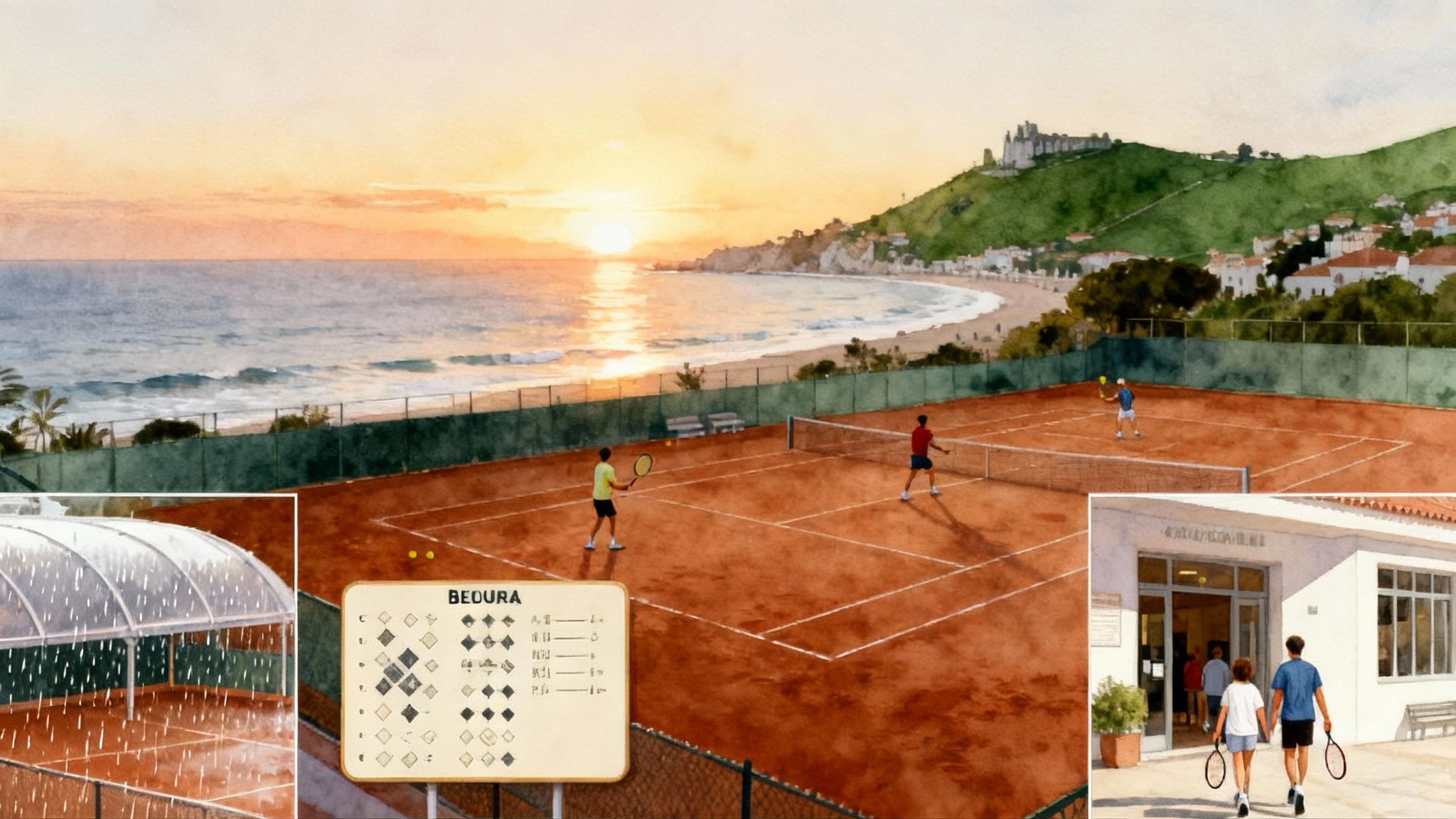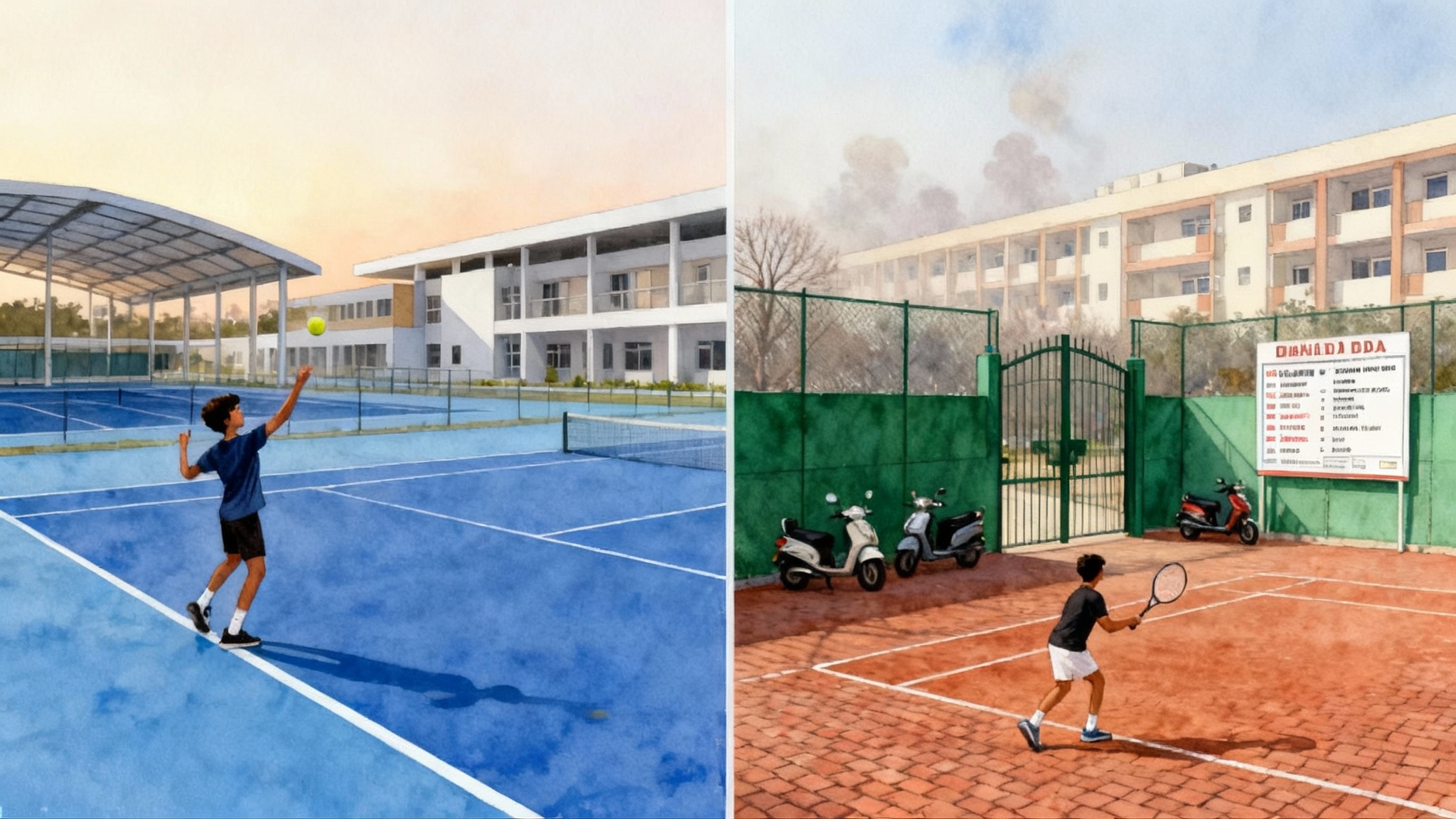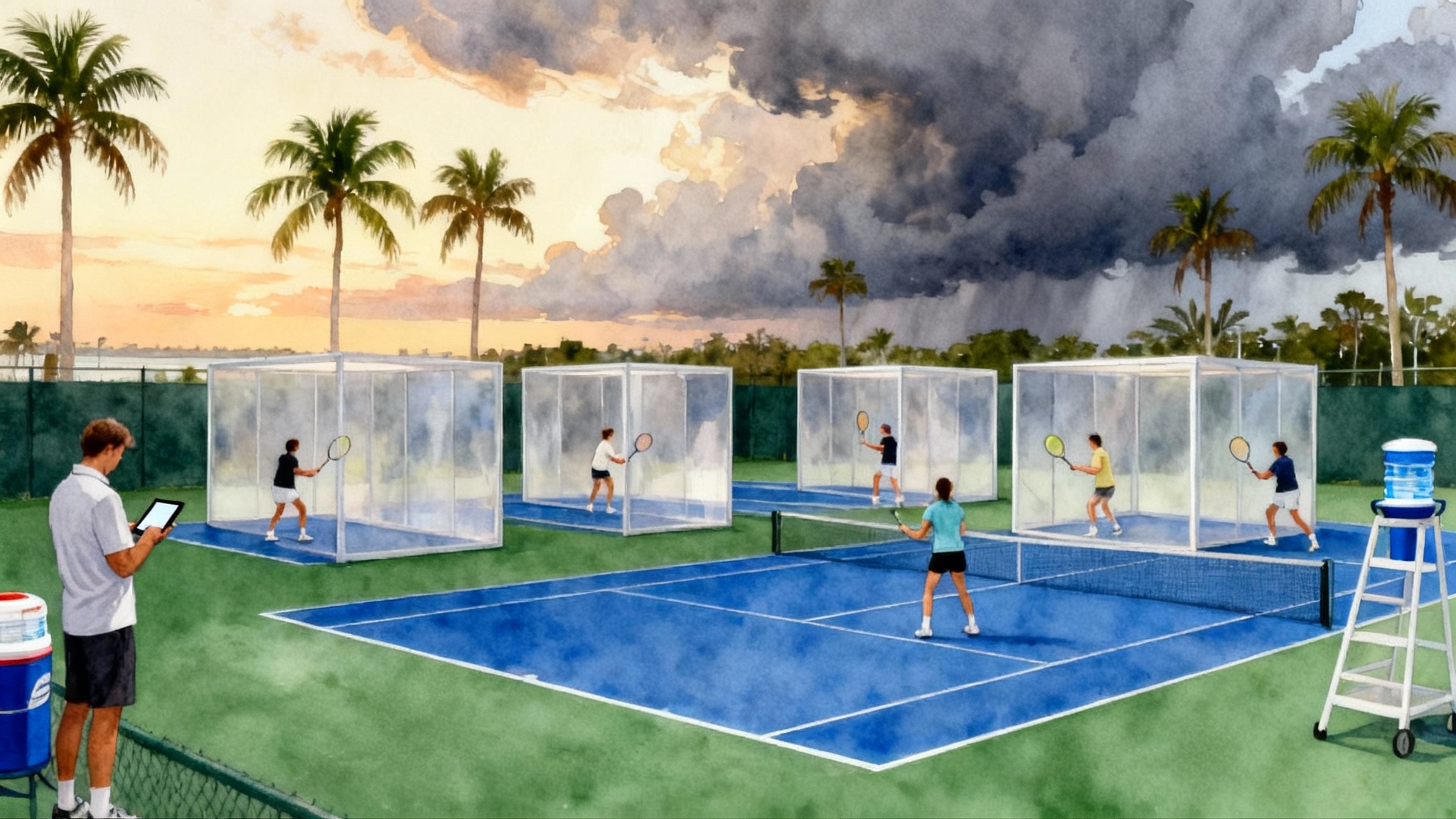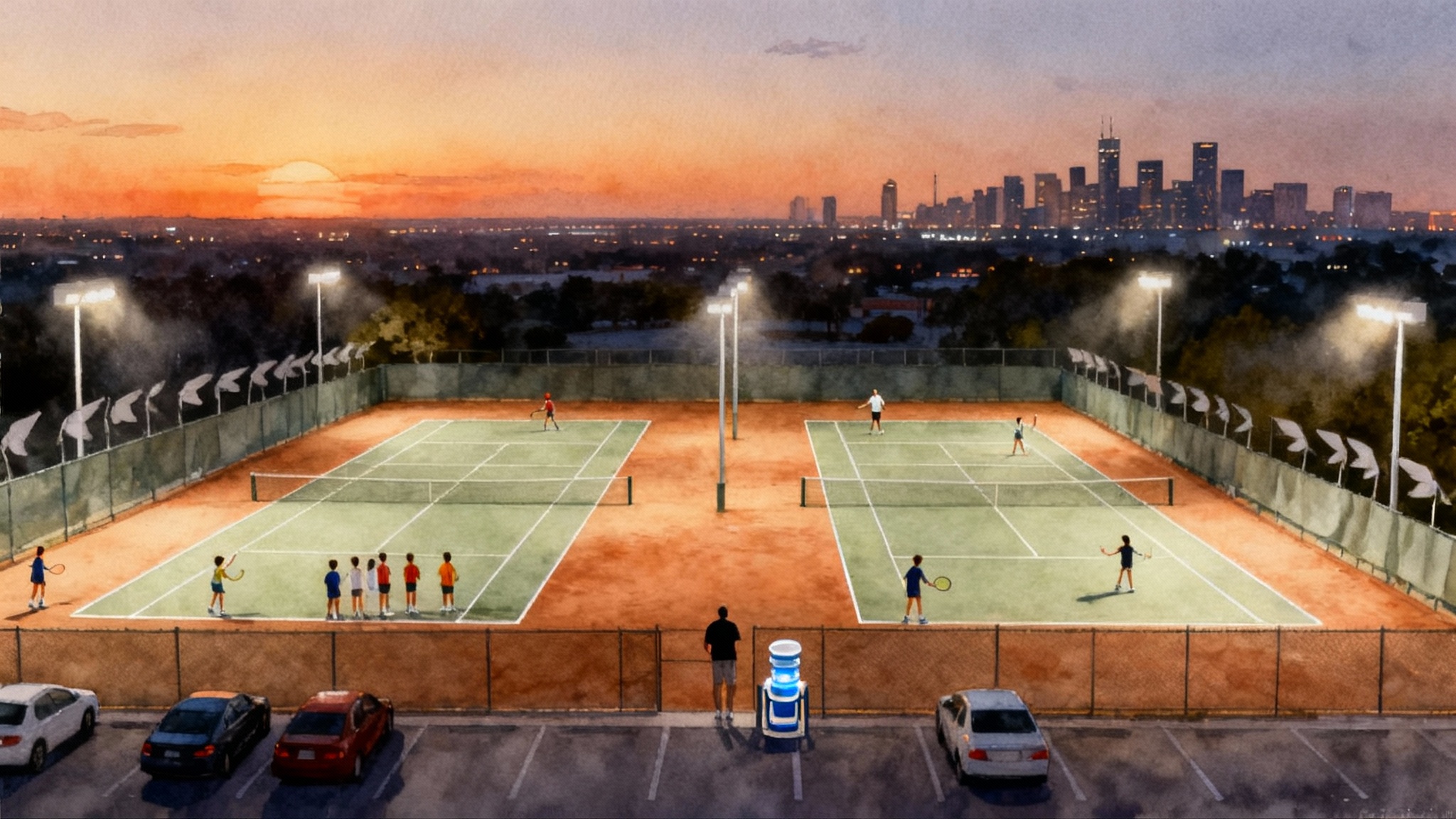Best Upstate New York Tennis Academies 2025-2026
A parent-focused comparison of high-performance tennis options in Rochester, Buffalo, and Albany. We rank programs by indoor access, UTR and USTA match-play volume, school integration, commute and boarding, pricing tiers, and college-prep outcomes.
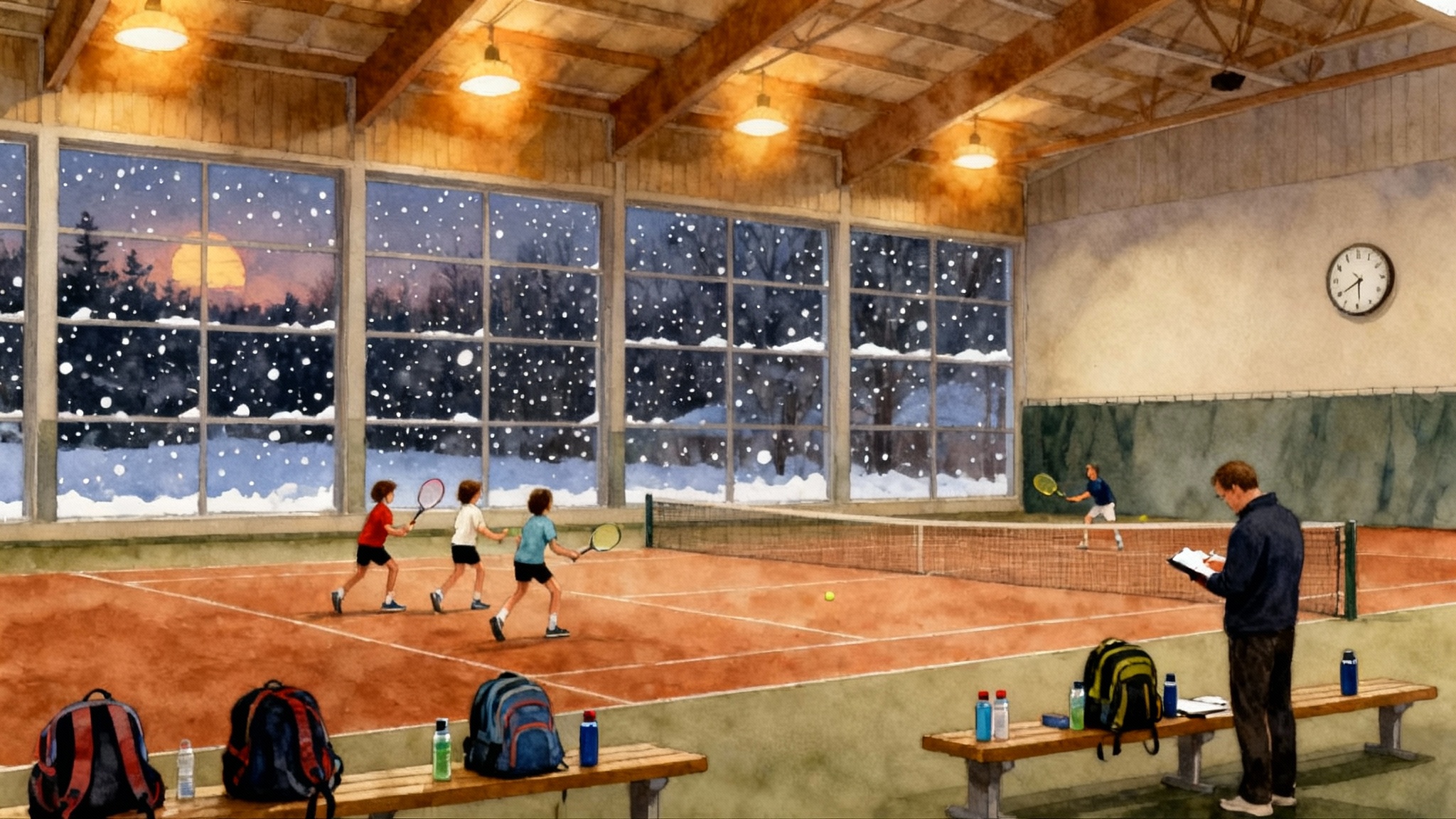
How to use this guide
If you live outside New York City and want a high-performance tennis base without uprooting your family, the good news is that Upstate New York has real depth. Winter is long, travel can be icy, and school demands are real. So we benchmarked Rochester, Buffalo, and Albany programs on the factors that matter to parents week after week, not just on Instagram highlights. If you are also weighing downstate options, compare with our New York City academy guide. For warm-weather training weeks, see our Miami and Fort Lauderdale academies.
What we measure and why:
- Winter-ready indoor access: months of snow make court availability and reliability central. It is the difference between steady development and long gaps.
- UTR and USTA match-play volume: consistent, verified results move rankings and build gritty competitors. For context on why this matters, see how the Universal Tennis rating works.
- School integration: can your child train without blowing up the school day or missing key classes?
- Commute versus boarding: day students need reasonable drives and make-up options. Few Upstate academies offer boarding, so smart commuting plans matter.
- Pricing tiers: families need transparent, predictable costs for groups, privates, and match play.
- College-prep outcomes: training quality, fitness, and a realistic plan to build a recruiting profile.
Below we profile the strongest choices in each metro area, with letter grades for each criterion and concrete parent takeaways. Grades reflect what families experience most of the year. If one category is mission critical for you, use the written rationale rather than the letter alone.
Rochester: Empire leads on school-day convenience, Midtown on scale
Empire Tennis Academy, Harley School campus
Why it stands out: Empire’s programs run on the Harley School campus, which is rare in the region. That setting means a true school environment around training, easy transitions between academics and practice, and reliable indoor access during storms. The culture is tight-knit and developmental, which benefits players in the middle stages of the pathway who need repetition, feedback, and a clear plan rather than a revolving-door clinic. For program background, see our Empire Tennis Academy profile.
- Winter-ready indoor access: A-. Indoor time is reliable and scheduling is intentional. On snow days or exam weeks, the campus setting makes rescheduling more humane.
- UTR and USTA match play: B+. Empire builds competitive windows into the calendar and encourages verified match play. Expect regular in-house match days and targeted tournament weekends rather than an every-night grind.
- School integration: A. Being on a school campus is the differentiator here. Families report easier handoffs between classes, study blocks, and practice when all roads lead to the same parking lot.
- Commute versus boarding: A. This is a day-program model by design, well suited to families within a 30-minute radius who want predictable routines and Sunday catch-up options.
- Pricing tiers: A-. Rates are public and reasonable for the region, with clear ladders from group to private work. As a reference point, the club lists standard indoor court time and private lessons on its site. See the current details on the Empire Tennis Academy at the Harley School.
- College-prep outcomes: B+. The staff emphasizes fundamentals, point patterns, and fitness habits that translate to high school varsity and regional tournaments. For projected Division Two or high academic Division Three paths, this structured consistency is often more valuable than occasional super sessions.
Parent takeaway: Empire is the right fit if you want a school-centered training week with dependable indoor time and a coach who can track progress over seasons. It pairs well with a travel plan that targets two to three strong tournament windows each semester and a heavier summer circuit.
Midtown Athletic Club, Rochester
Why it stands out: Midtown is the area’s biggest platform for year-round rep volume. Large facilities mean more hitting partners at each level, integrated strength spaces, and steady court access regardless of weather.
- Winter-ready indoor access: A. Large indoor capacity means cancellations are rare and backup courts exist when life happens.
- UTR and USTA match play: A-. Midtown’s scale supports more verified match play and ladders, plus deeper hitting pools on short notice.
- School integration: B. Efficient after-school blocks, but not a school-campus integration. Expect normal commute logistics and a typical 3 to 7 p.m. training window.
- Commute versus boarding: A. Ideal for day students. Easy to pair with nearby schools and club fitness.
- Pricing tiers: B+. Membership plus program fees is common at large clubs. The upside is facility breadth; the trade-off is that you plan the budget across multiple line items.
- College-prep outcomes: A-. For athletes eyeing Division One or top Division Three, the combination of volume, fitness, and a deeper peer group can accelerate the transition from regional to broader competition.
Parent takeaway: Choose Midtown if you want scale, variety, and year-round rhythm under one roof, and you are comfortable structuring academics around a conventional after-school commute.
Tennis Club of Rochester
Why it stands out: A historic club culture with quality coaching, community, and indoor options through the winter. Families often like the balance of instruction, match play, and a club that knows its players personally.
- Winter-ready indoor access: B+. Reliable, though prime-time slots fill quickly during peak school nights.
- UTR and USTA match play: B+. Regular opportunities, especially for high school varsity candidates and strong intermediates.
- School integration: B. Standard after-school model, good communication from staff.
- Commute versus boarding: A. Very workable for day students across Pittsford and greater Rochester.
- Pricing tiers: B+. Transparent court fees and seasonal structures help families budget. Plan ahead for peak-time demand.
- College-prep outcomes: B+. Strong for building into Section V success and for developing sound habits that support college recruiting later.
Parent takeaway: A balanced, community-forward option that supports steady growth and solid competition for players heading toward strong high school seasons and regional tournaments.
Buffalo: year-round options across the metro
Miller Tennis Center, Williamsville
Why it stands out: A year-round tennis destination with a reputation for deep programming and a competitive culture that attracts strong regional players. The coaching bench is broad, so you can mix technical work with point-play blocks and find live ball at your level most weeks of the year.
- Winter-ready indoor access: A. Purpose-built for Buffalo winters, with programming that continues smoothly through storms.
- UTR and USTA match play: A-. Consistent verified match opportunities and an environment where players can get meaningful sets against unfamiliar opponents.
- School integration: B. Traditional after-school training blocks. Morning and weekend options help families working around longer bus rides or suburban bell schedules.
- Commute versus boarding: A. A network of families carpools to reduce the weeknight load. The day-student model fits the entire metro area.
- Pricing tiers: B+. Expect a familiar mix of memberships, packages, and session blocks. Families report good clarity on program fees and private rates when planning seasons.
- College-prep outcomes: A-. Exposure to a wide range of game styles, consistent match play, and a college-aware coaching staff help players build a credible recruiting profile.
Parent takeaway: A top Buffalo choice if your player thrives in competitive groups and you want reliable indoor training with live ball on demand.
Village Glen and South Towns Tennis and Pickleball
Why they stand out: Two established clubs on opposite sides of the metro create a practical web of access. Their academy pathways move players from fundamentals to advanced tactics, with verified match play woven in.
- Winter-ready indoor access: A-. Spreading sessions across two sites gives families a plan B when life or weather forces changes.
- UTR and USTA match play: B+. Verified match play is a program staple, with clear pathways for players to test up a level.
- School integration: B. Traditional after-school schedules, with weekend match blocks for students who take heavy course loads.
- Commute versus boarding: A. East and south side locations shorten average drive times across the metro.
- Pricing tiers: B+. Tiered memberships and clear session menus help with budget predictability.
- College-prep outcomes: B+. Methodical progression through technical, tactical, mental, social, and athletic pillars sets a strong foundation for college-minded juniors.
Parent takeaway: A flexible, multi-site solution that reduces commute friction while keeping competitive reps steady all winter.
Albany and the Capital Region: depth of indoor courts and event hosting
Tri-City Fitness, Latham
Why it stands out: The Capital Region’s indoor backbone. The facility’s scale means fewer cancellations, a bigger practice ecosystem, and frequent league and tournament hosting that brings outside competition into your backyard.
- Winter-ready indoor access: A. Courts and staffing are built for winter volume, with redundancy when schedules get tight.
- UTR and USTA match play: A-. Regularly hosts sanctioned events and club ladders, giving players verified results without constant travel.
- School integration: B. Strong after-school blocks and late afternoon options support different bell schedules across Albany, Schenectady, Saratoga, and Troy.
- Commute versus boarding: A. A central location off the major roads keeps weekday drives realistic.
- Pricing tiers: B+. Clear clinic, ladder, and tournament menus help families forecast seasonal spend.
- College-prep outcomes: A-. The blend of volume, event access, and partner variety helps players mature into complete competitors.
Parent takeaway: If you want indoor reliability and regular exposure to tougher draws without long drives, Tri-City is a Capital Region anchor.
Sportime Schenectady
Why it stands out: A full-service club with consistent year-round programming and a track record of hosting important local competitions. Families appreciate the professional environment and the ability to combine training, fitness, and competition in one stop.
- Winter-ready indoor access: A-. Consistent scheduling and long open hours keep development moving during rough weather.
- UTR and USTA match play: A-. Regular league and tournament calendars build verified results and match toughness.
- School integration: B. A standard after-school training model with weekend match windows.
- Commute versus boarding: A. Convenient for families across Rotterdam, Schenectady, and neighboring districts.
- Pricing tiers: B+. Predictable session pricing and membership options.
- College-prep outcomes: A-. Players benefit from tournament hosting and the familiarity of competing under the same roof where they train.
Parent takeaway: A polished, competitive setting that makes it easy to string together training, fitness, and meaningful match play over the full academic year.
The Upstate Scorecard at a glance
Each grade reflects parent priorities we hear most often. Use these as a directional map, then verify schedules and pricing for your dates.
- Best school integration: Empire Tennis Academy (A)
- Most scalable training ecosystems: Midtown Rochester and Tri-City Latham (A range)
- Most flexible metro coverage: Village Glen and South Towns across Buffalo (A-)
- Most consistent winter availability across the board: Tri-City and Miller Tennis Center (A range)
- Strongest verified match-play pipelines close to home: Tri-City, Sportime Schenectady, Midtown Rochester, and Miller Tennis Center (A-)
Sample weekly plan for a day student
Use this as a template and adjust for your school’s bell schedule and the tournament calendar.
- Monday: After-school drilling and point play (90 minutes). Post-session homework block at the club for 45 minutes before heading home.
- Tuesday: Strength and mobility session focused on hips, shoulder care, and footwork patterns. Light serve practice at home or a short ball machine session.
- Wednesday: Live set play with a coach on courtside for accountability. Work on serve plus one and return plus one patterns.
- Thursday: Technical private lesson (60 minutes) that fixes one thing. Use video to build a single focus for the next two weeks.
- Friday: Recovery and homework night. Mobility, hydration, and eight hours of sleep.
- Saturday or Sunday: Verified match play or a local tournament block. If there is no event, schedule two practice sets with time on return games.
Why this works: steady indoor touches, one precision lesson, one live match window, and a proper recovery day. The pattern builds repetition without letting academics fall behind.
Budgeting without surprises
Parents plan better with real numbers. Look for programs that publish session rates, court fees, and private lesson prices so you can map a month in advance. Programs that post current pricing make it easier to compare apples to apples and to decide where to spend for the next jump. Empire’s site, for example, lists standard court and private lesson rates, which allows you to forecast a baseline month before you add tournament weekends.
A practical budgeting sequence:
- Lock in your group sessions for consistency. Two to three per week is the engine.
- Add one private session that is truly technical, with one measurable goal and agreed video review.
- Schedule one verified match window every 10 to 14 days. That cadence creates fresh UTR or United States Tennis Association data without burning out.
- Keep a small reserve for last-minute court time when school or weather forces shuffles. The families who keep one spare slot per week rarely skip training during midterms or snow weeks.
Choosing between good options
If you favor school integration over scale: start with Empire at Harley. The campus rhythm reduces friction, and your player will lose fewer minutes to parking lots and driving.
If you want the deepest daily hitting pool: look at Midtown Rochester, Tri-City Latham, or Miller Tennis Center. More courts and more peers translate into easier set scheduling and fresher opponents.
If commute time is your bottleneck: in Buffalo, consider Village Glen or South Towns based on where you live. In the Capital Region, Tri-City’s central location or Sportime Schenectady’s long open hours may trim weekday driving.
If college tennis is the aim: pair a high-volume training base with a deliberate tournament plan and regular verified match play. Keep a clean results log that shows trend lines, not just isolated peaks. Build a simple video library with two matches per season and a two-minute skills reel. College coaches want pattern recognition and competitive habits more than one-off wins.
Final take
Upstate New York is not a consolation prize for families outside New York City. It is a practical, year-round training landscape with enough indoor capacity to build real momentum in the months that most decide development. Your decision is less about finding a single perfect academy and more about aligning the daily rhythm with your child’s stage. If you prioritize school-day simplicity, Empire’s Harley campus gives you time back. If you want endless live ball and constant ladders, the largest clubs in Rochester, Buffalo, and the Capital Region create that ecosystem. Choose the environment that lets your player repeat the right work every week of winter. That is how rankings move, confidence sticks, and opportunities open when spring finally arrives.


